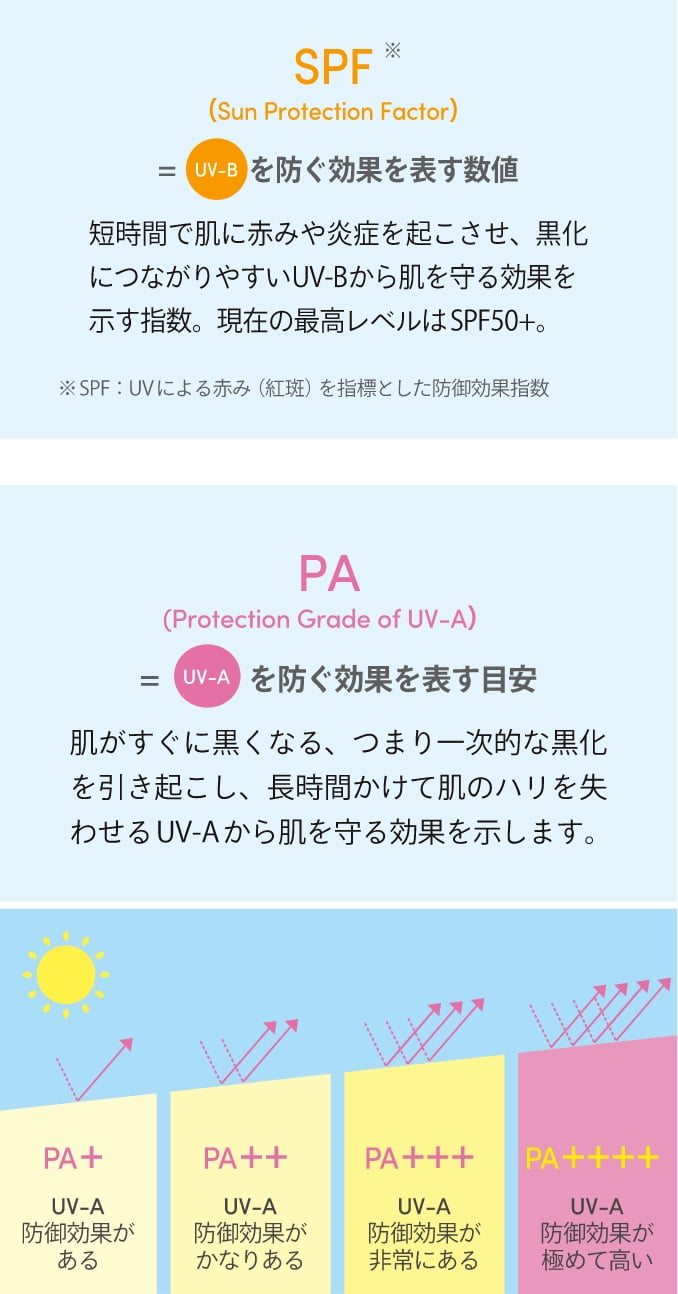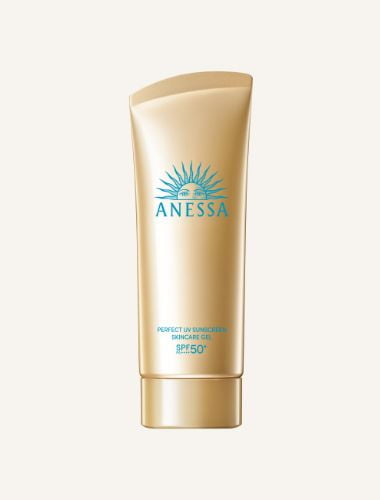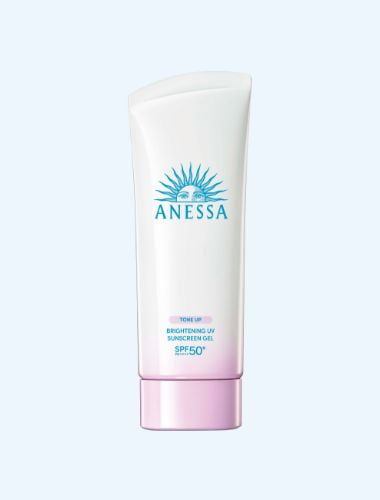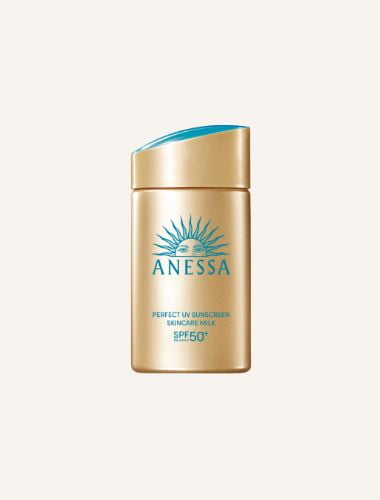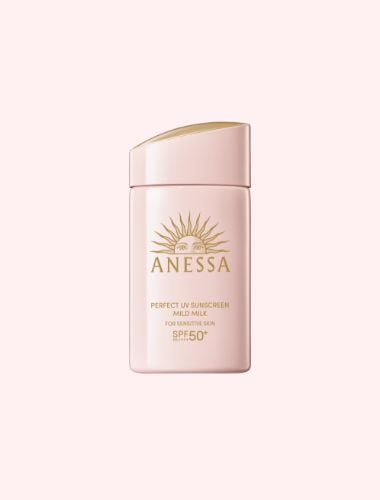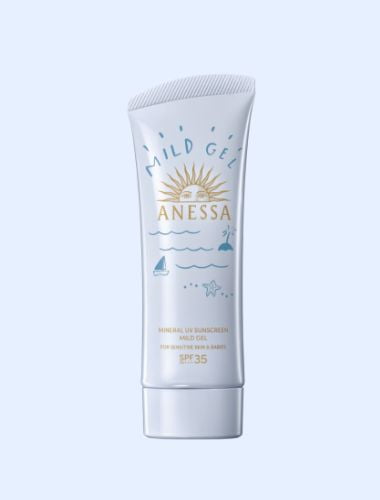Have you applied it today? UV protection is important at these times too!
Daily use of UV sun care products helps to prevent dark spots and wrinkles

-
CHECKDaily life presents a risk of
dark spots developing -
POINTWhat is the correct way to use UV protection?
-
WHY?What is the cause of dark spots ?
CHECK!
What kind of lifestyle do you have?
Check your inherent risk of developing dark spots
\ Select your lifestyle! /
-
AI go to the park with my child in the morning You often go on walks or do other outdoor activities
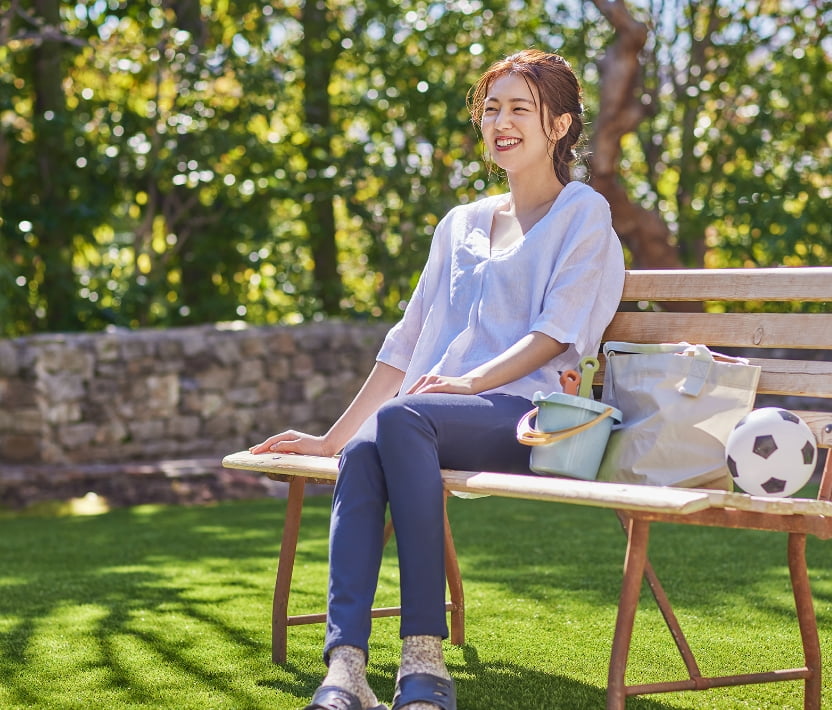
-
BI mainly work from home! You spend your time indoors
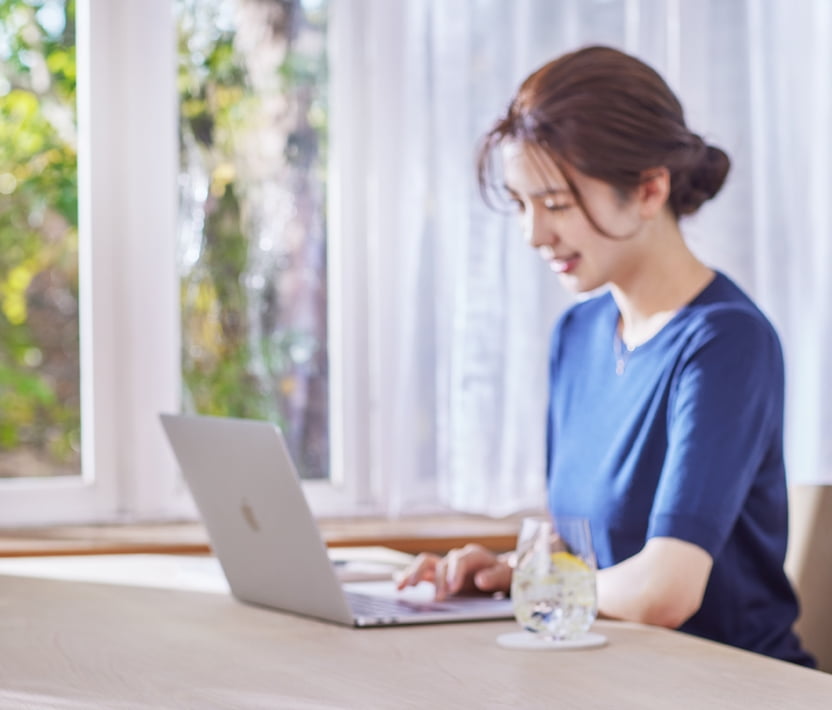
-
CI do the laundry, take out the garbage … During day you’re busy with housework
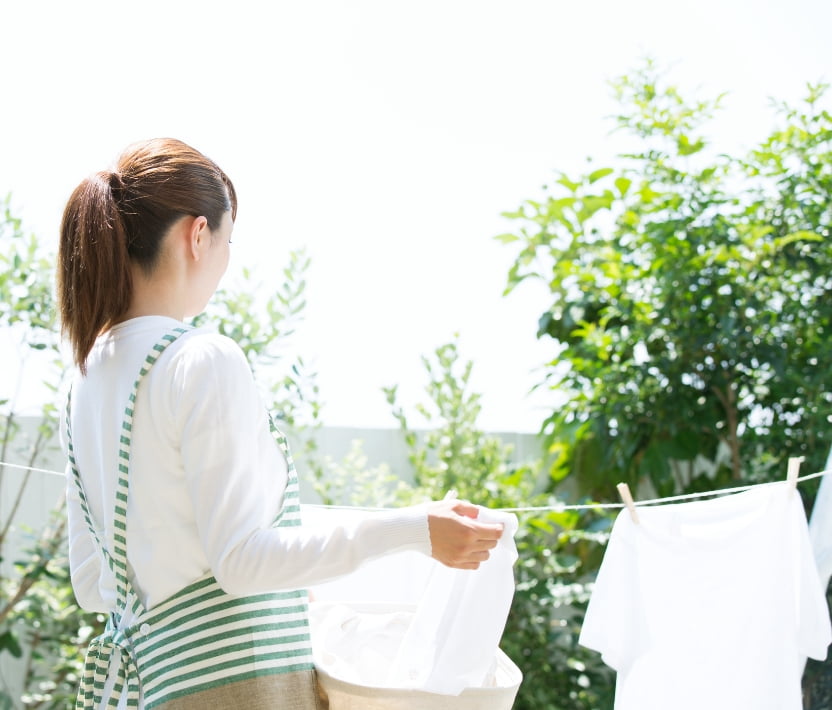
-
DI spend most of my time exercising outdoors! You jog or are physically active
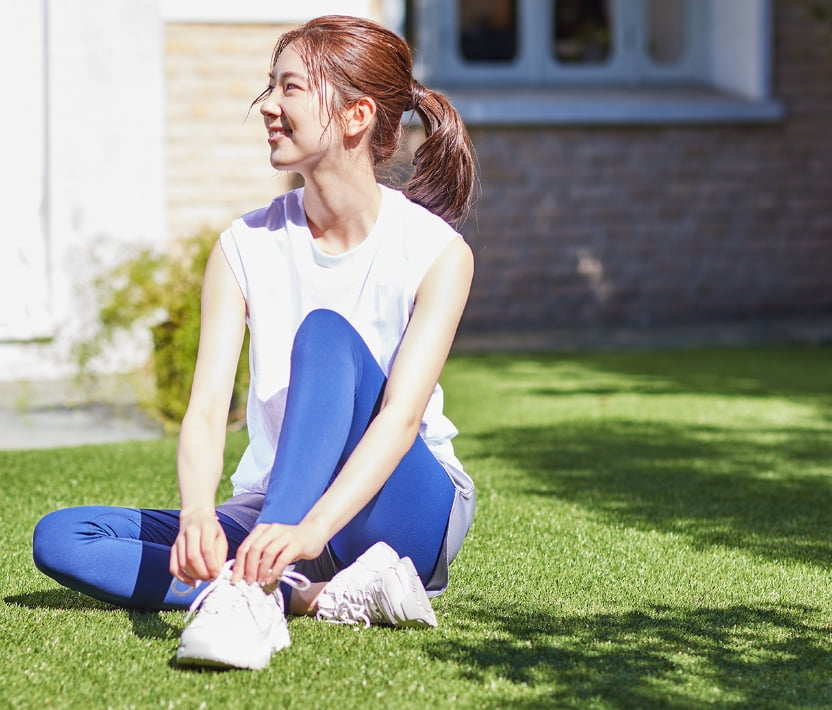
UV rays begin intensifying from around 7 AM
Even if exposure is for a short period, the damage from UV rays accumulates day by day, causing dark spots and wrinkles in the future. Even if you don’t have time to apply makeup, include emulsion with sunscreen and UV ray-blocking effect as a part of your morning skincare routine. Include a makeup primer and use UV protection before going outdoors.
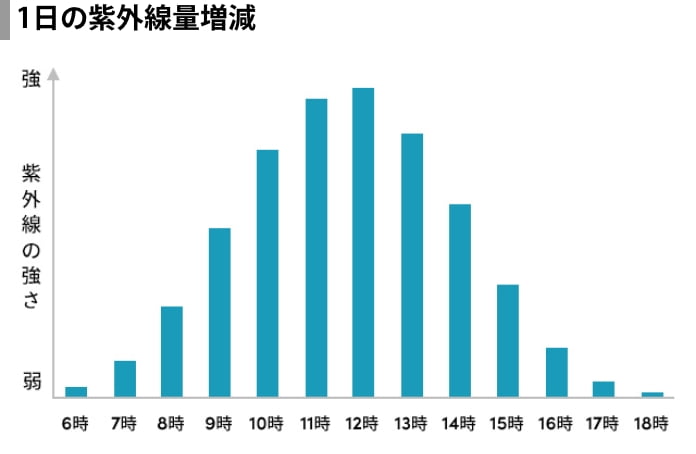
Source: 気象庁ホームページ「月最大UVインデックス(観測値)の時別累年平均値グラフ」(adapted from JMA website)
Some UV rays can penetrate windows and damage the skin.
These are ultraviolet A waves (UVA), accounting for around 90% of the UV rays that fall on the earth. UVA can cause skin to wrinkle, and sag, so be sure to apply sunscreen for UV protection.
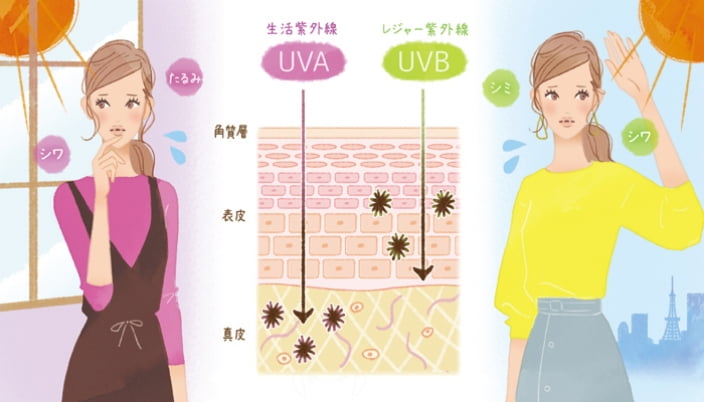
No matter the season, the middle of the day is the most dangerous time!
No matter what the season, UV levels are highest in the morning when laundry is hung out to dry, especially around noon. In the summertime, when the sun is directly overhead, the UV rays are intense. The amount of UV rays in fall and winter combined is equivalent to around 80% of summer levels. Don’t forget to apply sunscreen, including on the backs of your hands which are vulnerable to the sun’s rays even when exposed for a short time.
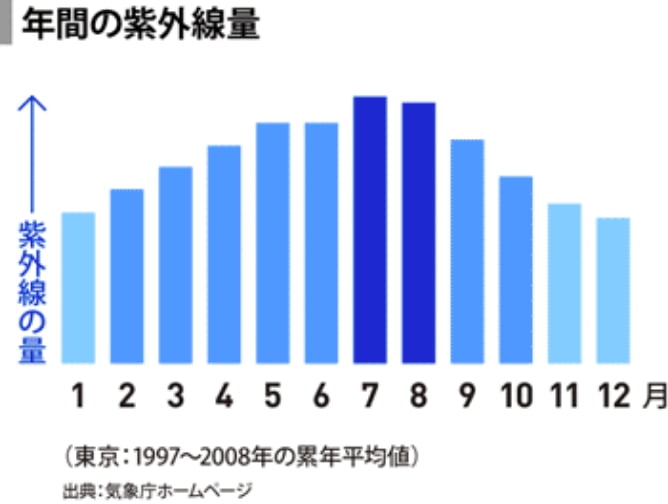
Source: 気象庁「日最大UVインデックス(解析値)の月別累年平均値グラフ」を加工して作成
In fact, a surprisingly large amount of UV rays fall on cloudy and rainy days. Even when it is cloudy, more than 60% of the UV r
Do not let your guard down because you are not exposed to direct sunlight. UV rays not only fall from above but also reflect off the ground and off walls, so be sure to take care.
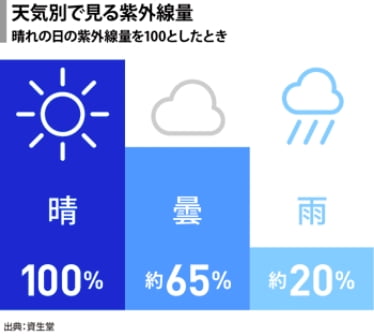
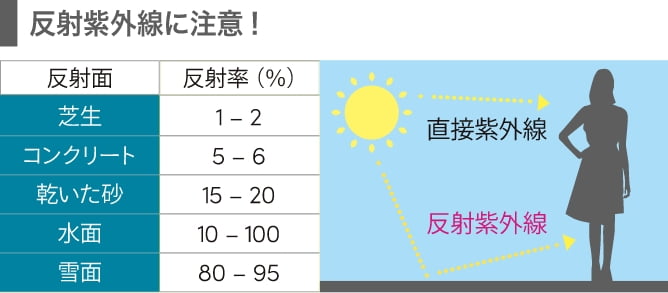
“It’s cloudy …” “I’m indoors …”
You might think you don’t need UV protection …
but never let your guard down!
The daily accumulation of UV rays puts you at risk for dark spots !
Make UV protection a daily habit!
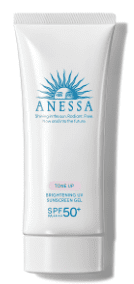
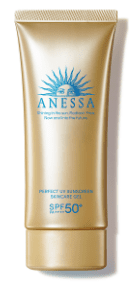
product for such a situation?
POINT
Two key points for daily skin protection against UV rays
Every morning after applying skincare, use a sunscreen that doubles as a makeup primer to protect against UV rays.
Reapply as needed, such as after sweating, toweling off, or long swimming sessions. It is recommended to reapply every 2-3 hours to maintain the benefit.
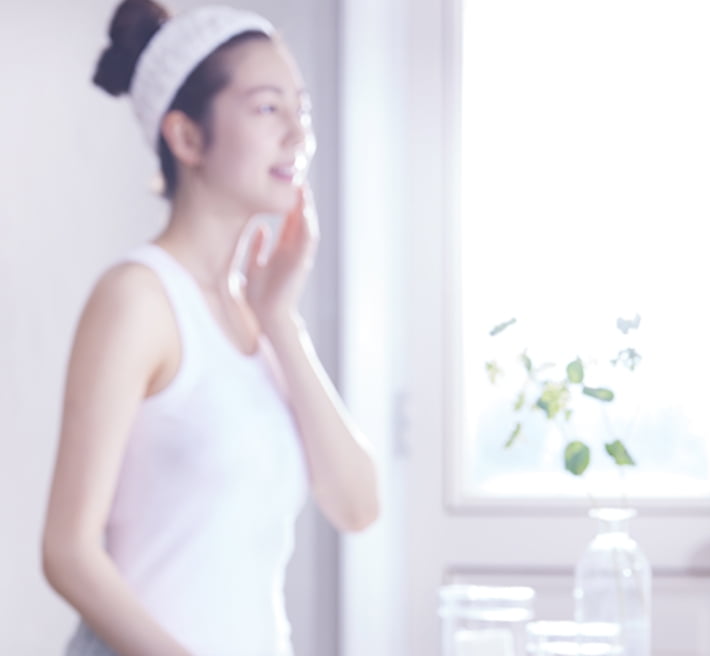
WHY?
What causes dark spots in the first place?
Know the facts and protect your skin!
There are two main causes of skin aging. One is due to aging, and the other is photoaging caused by the accumulation of UV damage. Photoaging is closely related to UVA, which reaches the dermis, damaging the collagen and elastin that maintain the firmness of the skin. This triggers aging signs such as wrinkles or sagging.
“Photoaging” is a skin aging phenomenon caused by solar rays. It is well-known that prolonged and unprotected daily exposure to UV rays increases melanin pigment, which is the source of dark spots and freckles. However, the latest research on UV rays has shown that exposure to UV rays also produces enzymes called gelatinases, otherwise known as dark spot eggs. These enzymes not only damage the epidermis but also degenerate collagen in the dermis, which leads to the development of more wrinkles in the future.
80% of skin aging is said to be due to photoaging. Even a small amount of exposure to UV rays hastens photoaging, so it is important to protect the skin from photoaging with sunscreen at all times, no matter the season.
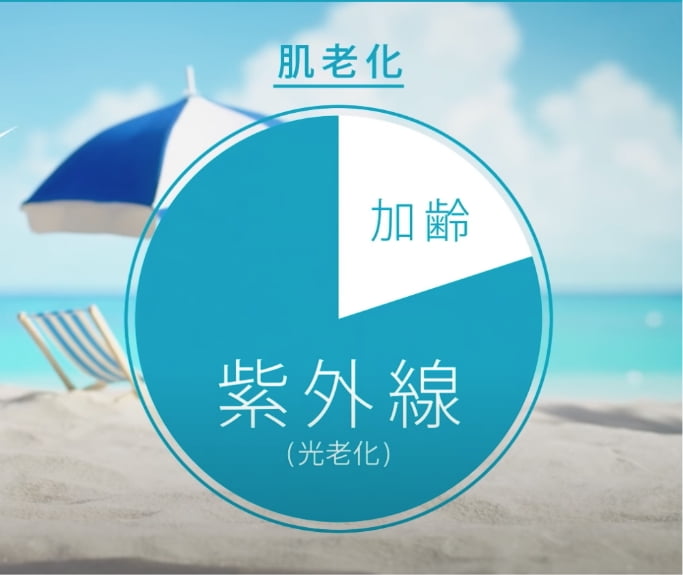
UV rays are divided into three categories according to wavelength: UV-A (ultraviolet A wave), UV-B (ultraviolet B wave), and UV-C (ultraviolet C wave). UV-C rays are absorbed by the ozone layer so do not reach the earth’s surface. The rays that have a negative impact on our skin are UV-A and UV-B.
UV-A rays account for approximately 90% of the UV rays that fall on the earth. UV-A rays are long-wavelength rays and are also called “lifestyle UV rays” because they penetrate clouds and the windows of houses and cars to reach the skin. Exposure to UV-A rays causes the sagging, and wrinkling of the skin.
UV-B rays are short-wavelength rays. UV-B rays are also called “leisure UV rays” because they are the main cause of sunburn outdoors. Exposure to high levels of UV-B rays causes skin to quickly become red and inflamed, producing melanin, which in turn causes dark spots and pigmentation.
Click here for more information!
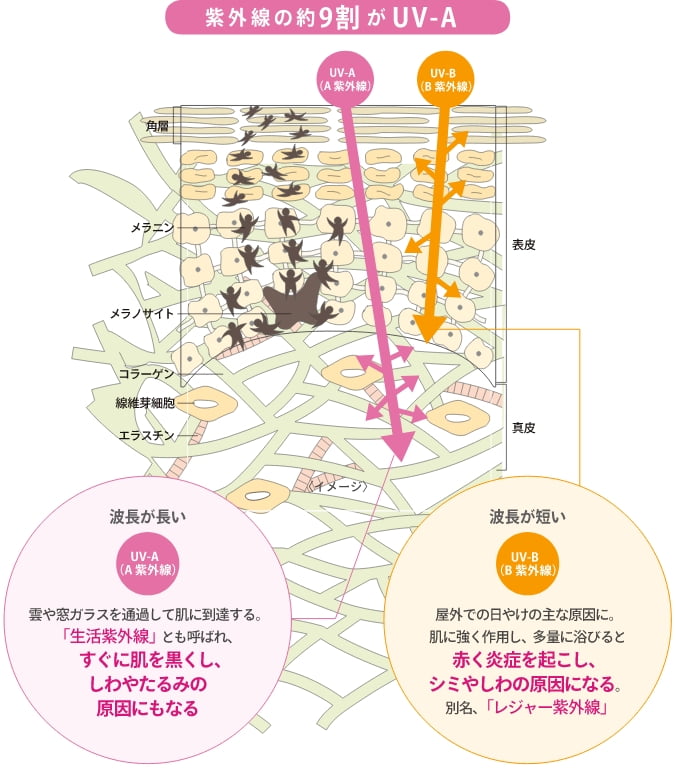
Many products are labelled with the terms “SPF” and “PA.” Do you know what these indicate? “SPF” and “PA” are ratings that indicate a sunscreen’s UV-protection efficacy.
“SPF” stands for Sun Protection Factor and indicates the product’s protection efficacy against the UV-B rays (ultraviolet B waves) that produce redness and inflammation on the skin in a short space of time, leading to darkening of the skin. The numerical value from 1 to 50+ indicates how long the UV-B waves would take to cause inflammation versus the amount of time without any sunscreen, with the higher number indicating better protection against UV-B waves.
“PA” measures a sunscreen’s level of effectiveness in protecting against UV-A rays (ultraviolet A waves), which cause temporary darkening of the skin and loss of elasticity over a long period of time. The rating ranges from one plus (PA+) to four (PA++++). The higher the number of pluses, the greater the level of UVA protection it provides.
Click here for more information!
